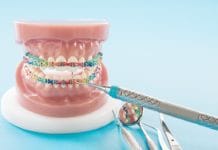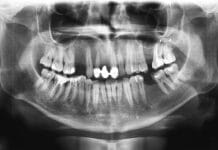1. Dental caries in primary teeth of children 2-11 years old declined from the early 1970s until the mid-1990s. This trend has reversed from the mid-1990s through the early 2000s, with a small but significant increase in dental caries in primary teeth of children aged 2-11.
According to data from the most recent National Health and Nutrition Examination Survey (1999-2004), there was a small but significant increase in dental caries in primary teeth of children aged 2-11 when compared to data from the early 1970s through the mid-1990s. Data shows 27.9% of children aged 2-5 have caries in primary teeth, while 51.17% of children aged 6-11 have caries in primary teeth.
Dental Caries (Tooth Decay) in Children Age 2 to 11. (2018, July). National Institute of Dental and Craniofacial Research. Retrieved from https://www.nidcr.nih.gov/research/data-statistics/dental-caries/children#dental-caries-in-primary-baby-teeth-unmet-needs
2. What overall percentage of children age 2-11 have untreated dental caries?
The National Health and Nutrition Examination Survey (NHANES) 1999-2004 found overall, 23% of children aged 2-11 had untreated dental decay in primary teeth. The highest percentage of unmet needs regarding dental caries in primary teeth were among Mexican Americans (33.09%), followed by Black, non-Hispanic children (27.58%).
Dental Caries (Tooth Decay) in Children Age 2 to 11. (2018, July). National Institute of Dental and Craniofacial Research. Retrieved from https://www.nidcr.nih.gov/research/data-statistics/dental-caries/children#dental-caries-in-primary-baby-teeth-unmet-needs
3. Diagnostic criteria of pediatric obstructive sleep apnea include which of the following?
In addition to sleepiness, hyperactivity, behavioral problems, and learning problems are part of the criteria necessary to determine pediatric obstructive sleep apnea. Additional symptoms that could lead to a pediatric obstructive sleep apnea diagnosis include:
- Snoring
- Labored, paradoxical, or obstructed breathing during the child's sleep
- One or more obstructive apneas, mixed apneas, or hypopneas per hour of sleep
- Apattern of obstructive hypoventilation, defined as >25% of total sleep time with hypercapnia (PaCO2 > 50 mmHg) in association with >1 of the following: snoring, flattening of the inspiratory pressure waveform, or paradoxical thoracoabdominal motion
Gipson, K., Lu, M., Kinane, T.B. Sleep-disordered Breathing in Children [published correction appears in Pediatr Rev. 2019 May; 40(5): 261]. Pediatr Rev. 2019; 40(1): 3-13. doi:10.1542/pir.2018-0142. Retrieved from https://www.ncbi.nlm.nih.gov/pmc/articles/PMC6557418/
4. Silver diamine fluoride arrests approximately 80% of treated lesions.
Multiple systematic reviews have established the safety and efficacy of silver diamine fluoride in children's arresting caries. Clinical trials found no serious adverse events reported in more than 3800 individuals, establishing a sound safety record. Regarding efficacy, approximately 80% of treated lesions were arrested. Other benefits highlighted in systematic reviews include ease of application and timeliness, minimally invasive, painless, and affordable.
Crystal, Y.O., Niederman, R. Evidence-based Dentistry Update on Silver Diamine Fluoride. Dent Clin North Am. 2019; 63(1): 45-68. doi:10.1016/j.cden.2018.08.011. Retrieved from https://www.ncbi.nlm.nih.gov/pmc/articles/PMC6500430/
5. As part of the evidence-based approach to care, the clinical recommendations for fluoride application in children under six years of age include which of the following?
For people with a high risk of developing dental caries, the evidence-based approach to care recommends 2.26% fluoride varnish or 1.23% APF gel, or a prescription-strength, home-use 0.05% fluoride gel or paste or 0.09% fluoride mouth rinse for all patients six years or older. In contrast, only 2.26% fluoride varnish is recommended for children younger than six years of age.
Weyant, R.J., Tracy, S.L., Anselmo, T.T., et al. Topical Fluoride for Caries Prevention: Executive Summary of the Updated Clinical Recommendations and Supporting Systematic Review [published correction appears in J Am Dent Assoc. 2013 Dec; 144(12): 1335. Dosage error in article text]. J Am Dent Assoc. 2013; 144(11): 1279-1291. doi:10.14219/jada.archive.2013.0057. Retrieved from https://pubmed.ncbi.nlm.nih.gov/24177407/
6. According to the American Association of Orthodontists, at what age should children be referred for a check-up with an orthodontist?
The American Association of orthodontists recommend children be referred for an orthodontic check-up around age 7. Though treatment may not start for several years, it is best to have an orthodontist follow the child's development. This will allow early intervention and make corrections much easier than if patients wait until they have all their permanent teeth.
Importance of Orthodontics. (n.d.) American Association of Orthodontists. Retrieved from https://www3.aaoinfo.org/blog/parent-s-guide-post/importance-of-orthodontics/
7. Children with poor oral health status are three times more likely than their counterparts to miss school as a result of dental pain. Absences caused by pain were associated with poorer school performance, but absences for routine care were not.
A study published in 2011 examined "school days missed for routine dental care versus dental pain or infection to determine the relationship between children's oral health status and school attendance and performance." The authors determined that children with poorer oral health were three times as likely to miss school at a higher rate than the number of days missed due to asthma. Kids with poorer oral health also had poorer school performance, even when the absence variable was excluded, children with poor oral health still had poorer school performance when compared with children with good oral health.
Jackson, S.L., Vann, W.F. Jr, Kotch, J.B., et al. Impact of Poor Oral Health on Children's School Attendance and Performance. Am J Public Health. 2011; 101(10): 1900-1906. doi:10.2105/AJPH.2010.200915. Retrieved from https://www.ncbi.nlm.nih.gov/pmc/articles/PMC3222359/












